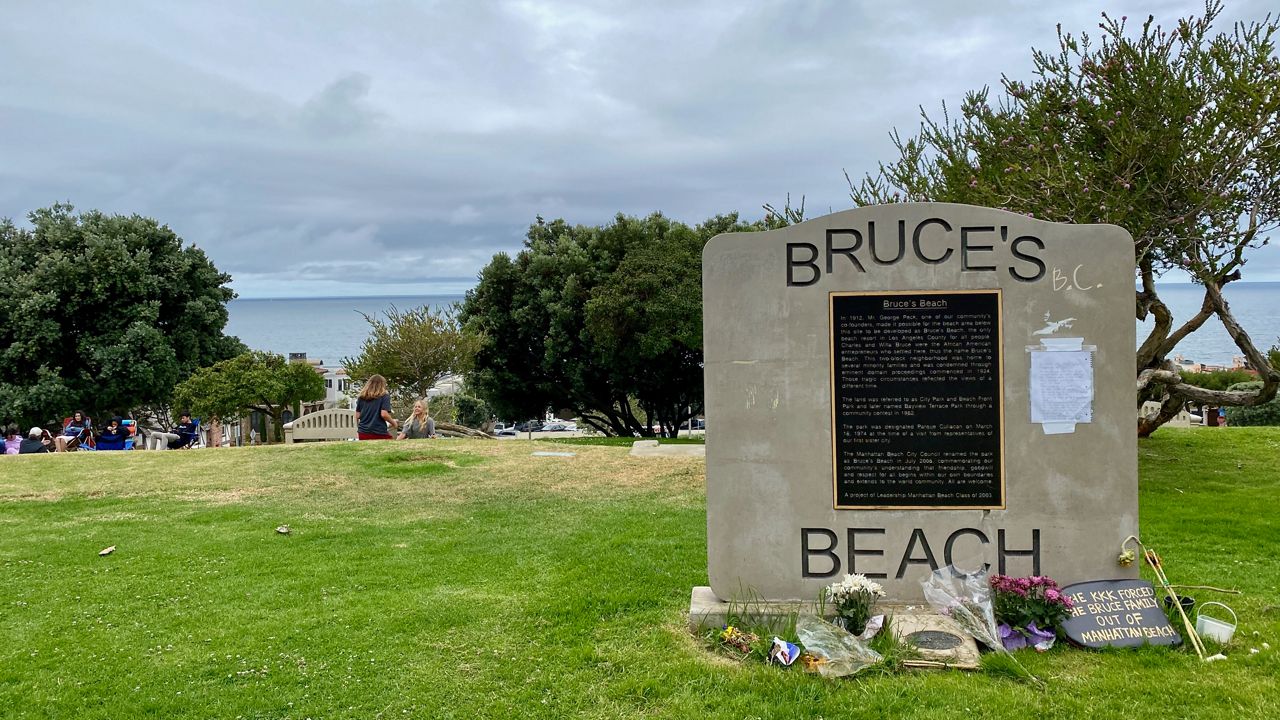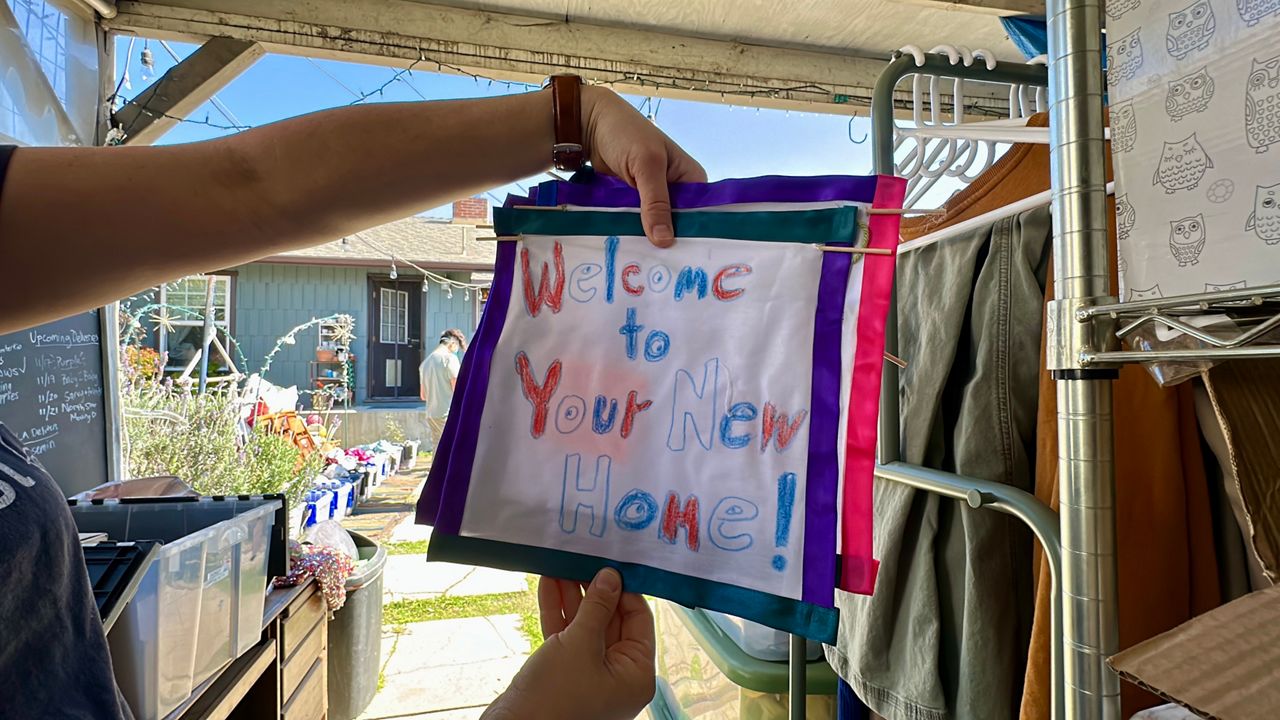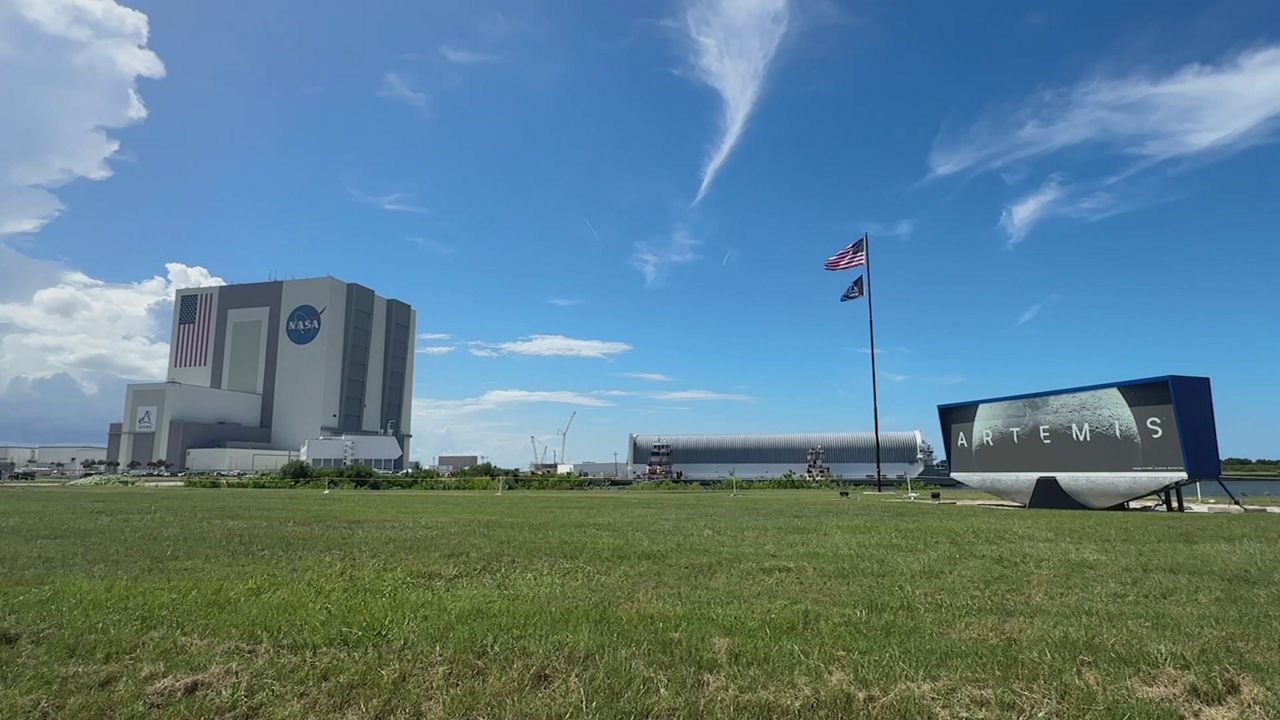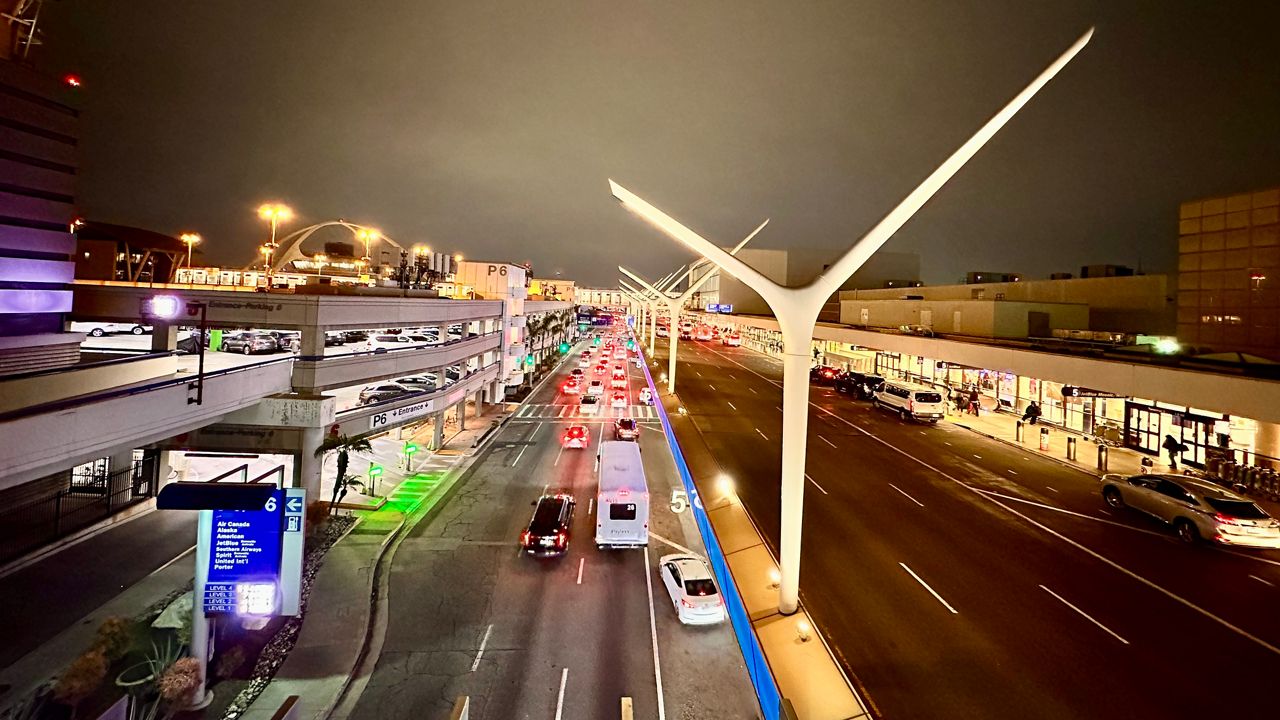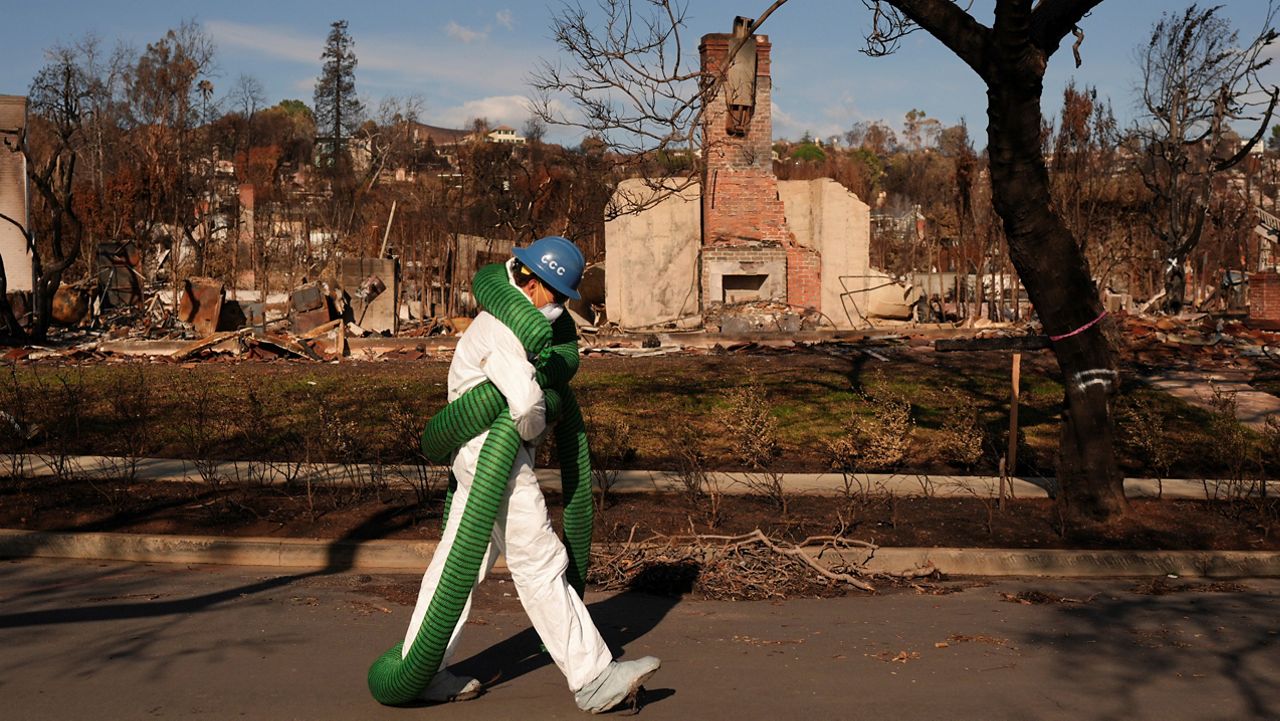MANHATTAN BEACH, Calif. — After more than five hours focused on their city’s historical acts of racism, the Manhattan Beach City Council took steps to recognize the wrongs committed nearly a century ago at Bruce’s Beach, a Black-owned beach resort that was seized by the city.
“Most of us now understand that serious and wrong actions were taken by the City of Manhattan Beach against two dozen MB families in the 1920s,” said Manhattan Beach Mayor Suzanne Hadley in a prepared statement read at the meeting. “Significantly, about a half-dozen of the affected families were Black. I agree that racism was the primary reason for the City Council of Manhattan Beach to start eminent domain proceedings against these families.”
But, when faced with whether to offer an apology for the city’s act of eminent domain, which forced five Black property owners to sell their land, city officials punted the discussion to a later meeting. Hadley was joined by at least one other member who said they would not support issuing an apology, while two others supported language that they believed might protect the city from legal liability.
The night’s discussion highlighted a schism in the Manhattan Beach community between those who vehemently argued that racism doesn’t exist in their town, and the city’s Black residents and allies who gave firsthand examples of racism and sought for the city to make even a “largely symbolic” gesture.
The meeting was the final step in the city’s processes for the Bruce’s Beach Task Force, a city-led group tasked with determining the history of the Bruce’s Beach park site, rewriting the text of an existing plaque at the park, and considering an art installation at the park as well.
Manhattan Beach has recently been in the national spotlight owing to racism, when two Black surfers were attacked with slurs in the water by the Manhattan Beach Pier. That was followed by a gathering of surfers who paddled out together in unity.
It’s worth noting that, as of the 2010 United States Census, less than 1% of Manhattan Beach’s population of more than 35,000 presidents identify as Black.
In 1911, Black entrepreneurs Willa and Charles Bruce used their hospitality expertise to turn two plots of beachfront Manhattan Beach property into a Black-friendly resort. According to historian Allison Rose Jefferson, “Bruce’s Beach was one of the only nearby places Los Angeles African American residents could enjoy the Pacific coastline offerings with minimal harassment.” Before long, other Black families and businesses moved to the area.
But the city was not especially welcoming. Visitors were harassed, local ordinances targeted Black businesses, and properties were firebombed.
By 1924, following a petition of residents, Manhattan Beach’s board of trustees (the precursor to today’s city council) condemned the two blocks of land where the Bruces and four other Black families owned land. The city’s stated reason was to build a park.
After five years and a legal quarrel, the matter was settled: The Black landowners took their settlement payments and moved on. Though three of those landowners repurchased elsewhere in Manhattan Beach, away from the sand, the Bruces moved on. A burgeoning Black neighborhood was snuffed out. No park was built on the property until the 1960s.
And though 25 white landowners were also dispossessed of their land, the only structures built in that area were owned by Black families, according to historical maps.
In the late 2000s, the city renamed the park to honor the Bruce family’s legacy. The move was spearheaded by Mitch Ward — the only Black person to have been elected to Manhattan Beach’s city council in the town’s history.
In 2020, in the wake of nationwide social movements, Manhattan Beach-area activists pushed the city and local schools to recognize the community’s racial inequities.
Prior to the council’s March 16 meeting, the task force presented a report outlining its findings and offered five recommendations regarding the artwork, a plaque, and the park’s history.
The task force also suggested that the city offer a formal apology for its past actions and that a public educational forum be held to discuss the city’s history. Further, the task force recommended that the city take expansive steps to examine accusations of systemic racism and collect race-based policing data from the local police department.
Those last recommendations set off segments of the community that were especially sensitive to the idea of Manhattan Beach’s name tied to racism.
A two-page color advertisement, taken out in The Beach Reporter local newspaper, struck a histrionic tone, accusing the task force of calling Manhattan Beach a “racist city” and saying that “race should not be used to grab power!” The ad was purchased by “Concerned Residents of MB,” and though the group published a contact email, they did not respond to requests for comment.
Former Manhattan Beach Mayor Amy Howorth took the ad to task during her own public comment. “When you have to put in quotes, ‘we are not racist,’ you might be a racist. I think you’re protesting too much,” she said. “In fact, if we are not racist, what are we afraid of?”
But the tone and ideas of the ad were repeated throughout the night.
“I disagree with an apology for something that took place 100 years ago,” said James Orland.
“What’s being proposed is just a slippery slope. Where does it end? …. And my fear is that the admission can be used as fuel to fire a potential lawsuit against the city in the future.”
Another woman, Leslie Ochsner, called on the city council to “grow some spins and resist the extortions and threats of the woke mob.”
“There are people who believe that if we just admit to something we didn’t do in this resolution that the racial grievance industry will move on to some other targets,” Ochsner said. “Make no mistake, if we give into this apology letter, the intimidations, the threats, and the accusations will continue.”
There was also a tense moment of transparent racism when a person calling themselves Ed Gaggicar said that “this whole Bruce’s Beach madness is bringing inner-city troublemakers here. We want the right kind of people in Manhattan Beach,” they said.
Other comments, from people identifying themselves as Asian American or immigrant minority members of the community, said that they had not experienced systemic racism within the city.
But Black residents, and their loved ones, said that they had seen racism firsthand.
Ava Cato-Werhane said that while Manhattan Beach is welcoming to visitors, joining the community is a different matter.
“I would really hope that the other residents of Manhattan Beach would step back and think and realize that…it is a very different experience as a Black woman coming in and trying to be a resident of the city,” Cato-Werhane said.
“Is it every day? No. Is it every week? No. But it’s here. I’ve had obscenities yelled at my husband in front of my two young boys,” said Vicki Edwards, whose husband is Black. “This is not about condemning Manhattan Beach as a racist city, this is about history, and educating our residents.”
Dr. Anthony Lee, a resident of Manhattan Beach for more than 30 years and a member of the Bruce’s Beach Task Force, clarified that the task force does not at all name Manhattan Beach or its citizens as racist.
“I’d like to point out that these recommendations are all simply symbolic gestures. They do not really accomplish anything beyond a statement of moral purpose,” Lee said. “I do not understand how an apology for past racial injustice will label the city as racist…in fact, refusing to apologize and shutting down a discussion of racial equity would have that precise effect on the city.”
Councilmember Steve Napolitano, in his statement following public comment, recalled a formal apology issued by President Ronald Reagan. The apology came alongside the Civil Liberties Act of 1988, which gave redress to more than 100,000 people of Japanese descent who were held in internment camps during World War II. (Manhattan Beach has history there too — at least some of the land that its high school sits on once belonged to the Uyematsu family, who were held at Manzanar).
“I was not alive at the time of their internment. But I didn’t take the apology as assigning guilt or to blame me personally. I saw it as our government trying to redress a past wrong that we collectively came to know as being wrong,” Napolitano said. He submitted an alternate apology to be considered alongside the one written by the task force, saying that his version “specifically recognizes that nobody today is personally responsible for what happened.” It also, he said, has been reviewed to determine that it offers “little to no chance” of legal liability.
Councilmember Joe Franklin said that he was against a resolution of apology. Instead, he supports a statement of “acknowledgment and condemnation of the racist actions which took place over 100 years ago.”
By night’s end, the Manhattan Beach City Council only took action on four of the task force’s five recommendations. Plans to consider artwork at the park site and to rewrite the Bruce’s Beach monument plaque were set in motion; a subcommittee was directed to continue investigating and updating the area’s history, as well. The recommendation for an additional educational forum, however, was shut down, and the task force was deemed completed and dissolved.
But, with little fanfare and no formal vote, the city council opted not to discuss offering an apology — or a statement of acknowledgment and condemnation — for the city’s past misdeeds. That discussion was tabled for a meeting at a later date.






